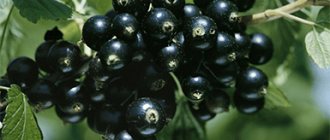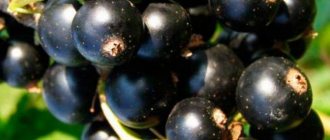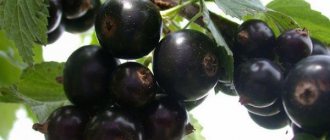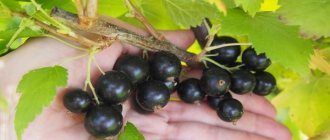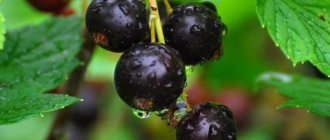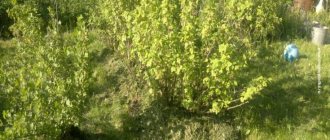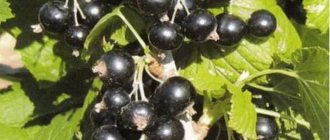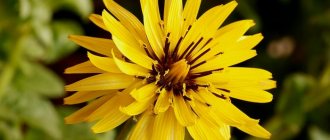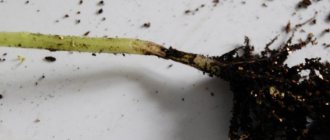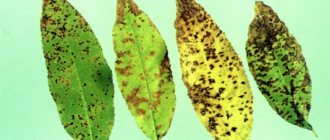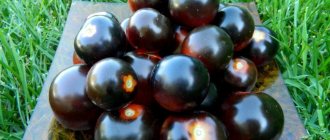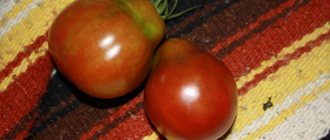Description of the black currant variety Golubka
Black currant Golubka (Golubki Seedling) is a representative of early ripening varieties, the fruits of which ripen in July, in some areas - at the end of June. It is advisable to start describing the bush with its appearance. The culture forms dense, not too tall, medium spreading bushes with elastic and slightly curved drooping shoots of green color. The shrub is characterized by the presence of a dense green mass, which is presented in the form of small, medium-sized five-lobed leaves with curled edges and a dark green color. The leaf blade is of low density, smooth, slightly concave.
During the flowering period, which begins in mid-May and lasts until June, small, pale pink flowers appear on the bushes. After the end of the flowering period, instead of flowers, clusters are formed, each of which grows 6–9 berries.
History of selection
The Golubka seedling is the result of breeding work by geneticists at a scientific research institute in Siberia, who in 1942, by crossing the varieties Sanders and Champion of Primorye, managed to create a new variety of currant, adapted to the climatic conditions of the country.
Today, the described culture can be found in almost all regions of Russia. It is recommended for cultivation in the North-Western, Volga-Vyatka, Central, Ural and West Siberian regions.
Did you know? Unripe blackcurrant berries contain 4 times more ascorbic acid than fully ripened fruits.
Appearance, characteristics of berries, ripening time, yield
As noted above, Golubka black currant is an early ripening variety, the fruits of which are ready for harvesting at the end of June - in the first half of July. At this time, small black berries with a waxy coating on the surface ripen on the bushes. Their weight is 0.7–1.8 g. The fruits ripen almost simultaneously, stay on the clusters for a long time, and are easily removed.
Due to the great juiciness and thinness of the peel, Golubki berries do not have a shelf life and are not suitable for transportation over long distances. Most often, the fruits are processed: they are used for canning and winter preparations, and are also frozen.
Dove berries do not have a sweet dessert taste and have a sour taste, but are highly valued for their high content of ascorbic acid. The pulp contains 7.5% sugar, 3.9% acids and over 160 mg of vitamin C per 100 g of raw material. According to tasters, the fruits deserve 3.9 points out of 5 possible.
Important! The currant bush has many shoots of different ages, which are located at different levels. This makes it possible to collect stable harvests for 10
-
13 years old.
As for the crop yield, it is quite high and stable. Under good weather conditions and proper care, one bush can produce 6–7 kg of berries per season.
Landing Features
To ensure that the work of planting black currants is not in vain, you need to take into account some features.
What time to plant seedlings
Can be planted in autumn or spring. The planting season is not of fundamental importance; the main thing is to do it within a certain period.
- In the fall, Bagira seedlings should be planted in early October so that the plant has time to successfully adapt. Until spring, the currants will take root and, with the onset of warmth, will actively begin to grow;
- In the spring, you need to be in time before the sap begins to flow and the buds swell. If you miss the deadline, the seedling will take a long time to take root.
You can plant currants in autumn and spring, the main thing is not to miss the deadline
Planting site and suitable soil
When choosing a site for planting Bagheera currants, you need to take into account the fact that in one place the variety will grow and successfully bear fruit for more than 15 years
Sunlight is important for the plant, but midday sun can cause burns. Therefore, it would be ideal to plant shrubs in light partial shade.
Avoid heavy shading - in such places the berries become sour and the bushes become very elongated. Usually currants are planted along hedges and fences. This is done for the purpose of protection from winds, especially northern ones. In winter, snow accumulates in such places, which will protect the currants from freezing.
Among the soils, Bagheera prefers slightly podzolized, loamy and sandy loam compositions with a neutral or slightly acidic reaction. The soil on which black currants will grow must be nutritious and loose.
Avoid planting Bagheera in swampy lowlands. Also, you should not plant in areas where related plants - gooseberries and currants - previously grew. Toxins that are unfavorable for growth can accumulate in such places. Bagheera grows poorly on sandy, saline and heavy soils.
The yield of black currant depends on the right location
Preparing the site for planting
If planting is scheduled for spring, you need to prepare the soil and dig a planting hole in advance - in the fall. The preparatory period for autumn planting can begin a month before the planned action.
- The selected area is leveled, weeds and plant debris are removed.
- They dig up the soil well and break up large clods of earth.
- On a leveled surface, outline the dimensions of the planting hole - 0.5 m in circumference. They dig 40–45 cm deep. The top fertile layer of soil is put aside.
- To fill the hole, add to the deposited soil: 3–4 kg of well-decomposed manure, 120–150 g of granulated superphosphate, 150–200 g of ash, 25–30 g of potassium sulfate. Instead of these fertilizers, you can add 200 g of complex mineral additives to organic matter. The composition is mixed well and placed in the pit.
- Pour out 2-3 buckets of water so that the soil compacts and does not sag after planting.
Considering the size of the Bagheera currant bushes, the planting pattern should look like this - the distance between bushes is from 1.2 to 1.5 m, in row spacing - at least 2 m.
The hole for planting currants must be dug in advance.
Selection of planting material
Only healthy planting material can guarantee the further healthy development of the plant and stable yields.
- For planting, it is best to select young 1–2 year old plants;
- the root system is powerful and strong, at least 20 cm long. 3–4 lignified branches must be covered with a fibrous network of additional roots. Rotten or damaged areas are not acceptable;
- the above-ground part should consist of 1–2 branches 30–35 cm long. The shoots should be elastic, covered with an elastic bark that is not damaged.
To be sure of the chosen variety, you should buy seedlings only in specialized centers.
Step by step planting process
To properly plant black currants, you need to know one secret - the seedling must be placed at an angle of 45, and the root collar is buried 6–9 cm into the soil. Thanks to this, the young plant will be able to quickly grow additional healthy shoots and form a strong bush.
Part of the soil is removed from the hole. The seedling is placed in the planting hole at an angle and the roots are straightened. Gently cover with soil, shaking slightly so that the soil fills all the voids between the roots. At the same time, you can spill water
One bush will need 3-4 buckets. After planting, the soil around the bush is carefully compacted and mulched.
When planting, the currant bush is tilted at an angle of 45 degrees.
Advantages and disadvantages of the variety
- Reviews from gardeners who grow Dove Seedlings indicate that the culture has a lot of positive qualities, including:
- self-fertility of the bush, which is about 80%;
- high yield rates;
- early ripening;
- good taste of fruits and their universal use;
- low maintenance requirements;
- good resistance to anthracnose and terry;
- long fruiting period.
- The culture is not without some disadvantages:
- average winter hardiness;
- low immunity to powdery mildew and bud mites;
- poor keeping quality and transportability of berries;
- the dependence of the taste of fruits on climatic conditions - the more moisture, the more sour the berries.
We organize competent bush care
To get a viable plant, it is recommended to provide full care for it.
Watering
It is worth watering the plant in the evenings. This will help ensure the roots are well hydrated. An adult bush will require 1.5-2 buckets of water. There should be no stagnation of liquid in the central part. It penetrates into the stem gaps and freezes in winter. This negatively affects productivity.
Feeding
The plant requires systematic feeding. With rapid crop growth, mineral and organic fertilizers must be introduced. In early April it is worth applying nitrogen fertilizing, in October - products containing phosphorus and calcium.
Trimming
The crop needs to be pruned in April. If the branches are directed inward, they need to be removed. Otherwise, there is a risk of reduced yield. After stopping the development of root shoots, 5 branches should be shortened by a third. If there is no effect, the weakest shoots are cut off.
Loosening the soil
The soil under the crop should always remain loose. Therefore, the plant should be systematically loosened. In spring, it is recommended to mulch the ground with moss or peat.
Shelter for the winter
In severe frosts, currants should be covered. To do this, branches and trunks are wrapped with rope. It is recommended to place them quite close. The bush should be bent to the ground and wrapped. Cover the top with a wooden box. It is also permissible to use an old blanket or fir branches.
Diseases and pests: treatment and preventive measures
Typically, such currants suffer from powdery mildew. This disease is caused by the development of a fungal infection and is accompanied by the appearance of a white coating.
In such a situation, you need to sprinkle the plant with copper sulfate. A solution of soda ash is also suitable. It is recommended to treat the bush every 10 days. An infusion of peat will also help to cope with the problem.
Golubka currant is a tasty and productive variety. To achieve good results in growing this crop, it is recommended to strictly follow the rules of planting and caring for the plant.
The Golubka currant was bred by Siberian breeders. Its value lies in its early ripening, productivity, and resistance to drought. The variety was included in the State Register of the Russian Federation in 1984 under the name Golubki Seedling.
